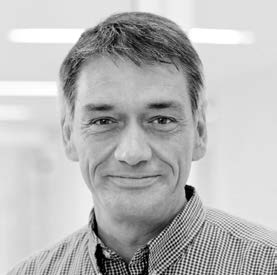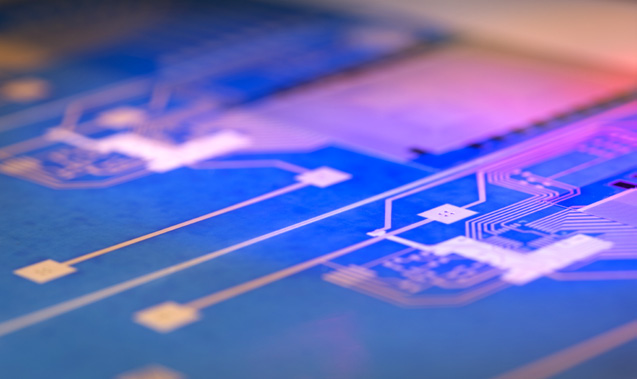The last word … today goes to Dr. Eng. Stephan Guttowski from the FMD


Dr. Guttowski, the Research Fab Microelectronics Germany FMD has now existed for some months. What experience have you been able to garner so far?
I have become more familiar with the diversity within the Fraunhofer-Gesellschaft. I wasn‘t all that aware of it and it really impressed me. I have also learned how much Fraunhofer know-how is to be found in our daily lives – e.g. in white LEDs. These were invented by the Fraunhofer Institute for Applied Solid State Physics IAF (and, simultaneously, by the Japanese firm Nichia).
You are the technology park manager for heterointegration in the FMD. What does the term refer to?
Heterointegration refers to technologies that allow us to merge different components in a single product. The individual components differ in various properties such as size and material and each needs to be handled in a certain way. It’s therefore important to find ways to use these different components in one product.
What are your duties in connection with this position?
First of all, I visit the ten institutes that are part of my technology park. I use our setup workshops to gain a better overview of the technologies on offer and also to get to know my colleagues. Together, in the second step, we define the interfaces between the individual process steps. The third step is developing a joint offering from all ten institutes for our project partners in industry and science.
Let’s look into the future. What would you like to have achieved in five years’ time?
My aim is to develop a complete heterointegration offering that is fully coordinated and ready for the future.
Which of the projects being worked on by your colleagues in other Fraunhofer institutes interests you in particular?
I have seen some amazing technologies at every institute. Some examples include the projectors from the Fraunhofer Institute for Silicon Technology ISIT in Itzehoe. Our colleagues there have been developing andmanufacturing silicon micromirrors that can be used to deflect a laser beam very quickly. For the projectors, a mirror plate with a diameter of around 1 mm is suspended on two axes by means of springs that are only a few micrometers wide. This can be moved back and forth up to 70,000 times per second to deflect a laser beam both horizontally and vertically. Actuating a red, a green, and a blue laser source synchronously with the mirror movement makes it possible to project high-definition images. Projectors like this can be used as head-up displays in automobiles, for example. This development combines so many technical challenges – it‘s just crazy!
What invention would you not like to do without in daily life?
As an amateur yachtsman, I very much appreciate the GPS system – it makes navigating on the open seas much safer.
What do you wish you had more time for?
I wish I had more time to read – the stack of books at home is growing all the time. Last, but not least: can you tell us what motto you live by? Behind every person is an exciting story, and it‘s particularly nice when you get to hear it.
About Stephan Guttowski
Dr. Eng. Stephan Guttowski studied electrical engineering at TU Berlin, focusing on measuring and automation technology, and then went on to do a doctorate in electromechanical compatibility. He then did a post-doc at the Massachusetts Institute of Technology (M.I.T.) in Cambridge. After returning to Germany, Guttowski first worked in the electric drive research lab at DaimlerChrysler AG and, in 2001, moved to the Fraunhofer Institute for Reliability and Microintegration IZM. Here, he was initially chairman of the Advanced System Development group before taking over the System Design & Integration department. Since June 2017, Guttowski has been technology park manager in the FMD and, within this role, works towards cross-institute cooperation.
Last modified: